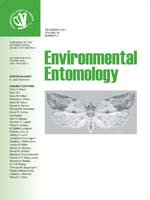Temperature and food quality both can influence growth rates and developmental time of herbivorous insects and mites. Typhlodromus athenas Swirski and Ragusa is an indigenous mite in the Mediterranean region and data on its temperature dependent development are lacking. In the current study, temperature-dependent development and survival of T. athenas immature stages were evaluated on eggs and all stages of Tetranychus urticae Koch, as well as on almond (Prunus amygdalis Batsch) pollen, under seven constant temperatures ranging from 15 to 35°C, 65% RH, and a photoperiod of 16:8 (L:D) h. On both diets survival was considerably high at all temperatures. The longest developmental period of immature stages was recorded at 15°C, whereas the shortest was at 30°C Female immatures on almond pollen had shorter developmental time compared to that on twospotted spider mites. Food had a significant effect on female total developmental time at temperatures lower than 25°C The lower developmental thresholds, estimated by a linear model, for egg-to-adult of females and males fed on pollen were 8.60 and 8.77°C, respectively, whereas on T. urticae they were 10.15 and 10.62°C, respectively. Higher values of tmin for total development were estimated by a nonlinear model (Lactin-2), and ranged from 10.21°C for both females and males on almond, to 11.07 for females and 10.78°C for males on prey. Moreover, this model estimated optimal and lethal temperatures accurately. The results of this study indicate that T. athenas appears better adapted to higher temperatures that occur in the Mediterranean region and may be a useful biological control agent.
How to translate text using browser tools
1 December 2011
Temperature and Diet Effects on Immature Development of Predatory Mite Typhlodromus athenas Swirski and Ragusa (Acari: Phyotseiidae)
P. D. Kolokytha,
A. A. Fantinou,
G. Th. Papadoulis
ACCESS THE FULL ARTICLE
It is not available for individual sale.
This article is only available to subscribers.
It is not available for individual sale.
It is not available for individual sale.

Environmental Entomology
Vol. 40 • No. 6
December 2011
Vol. 40 • No. 6
December 2011
development
food
temperature
Typhlodromus athenas




